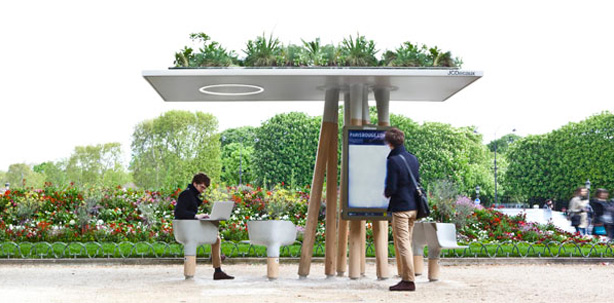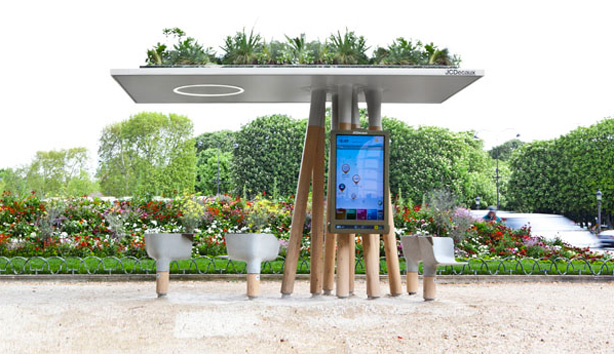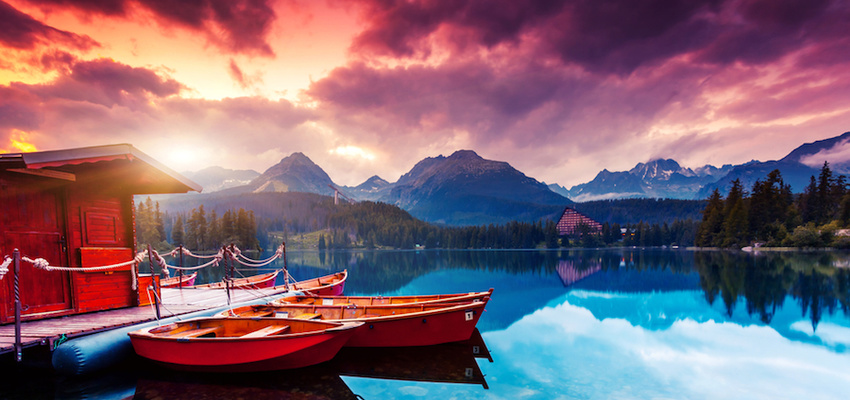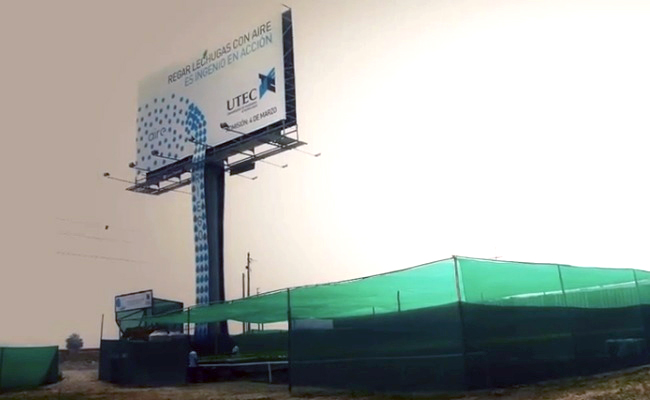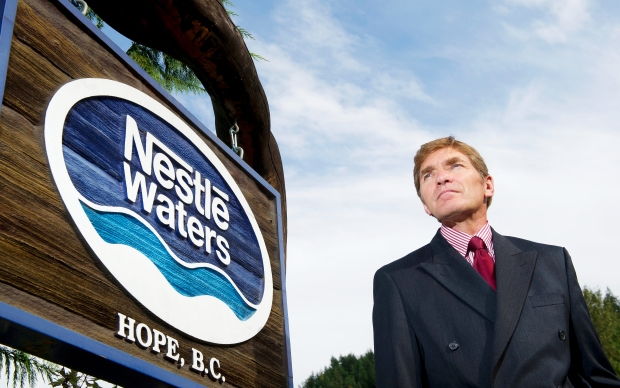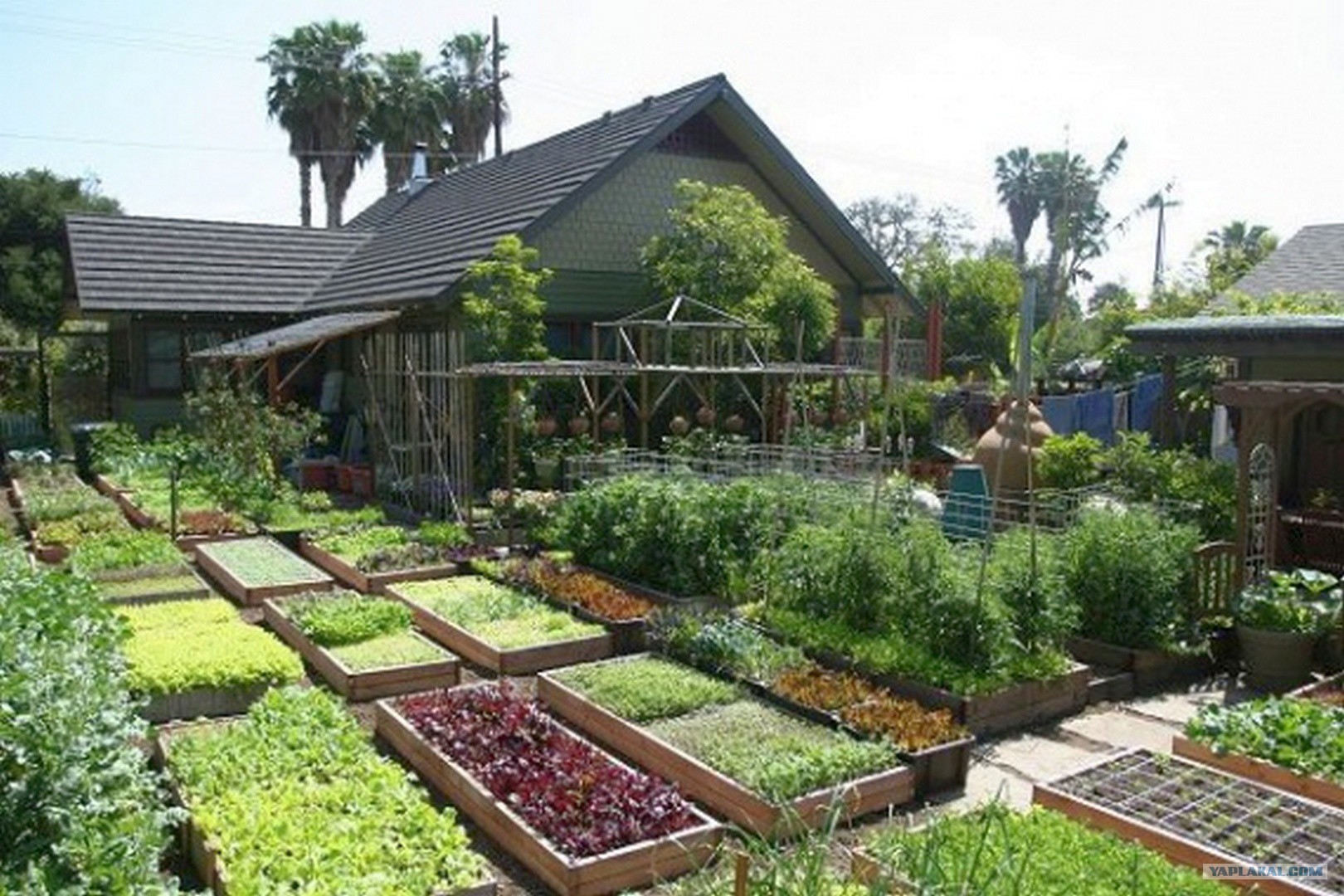Green Roofed Paris Shelter Offers WiFi and City Guides
June 29, 2012 by Robin Plaskoff Horton
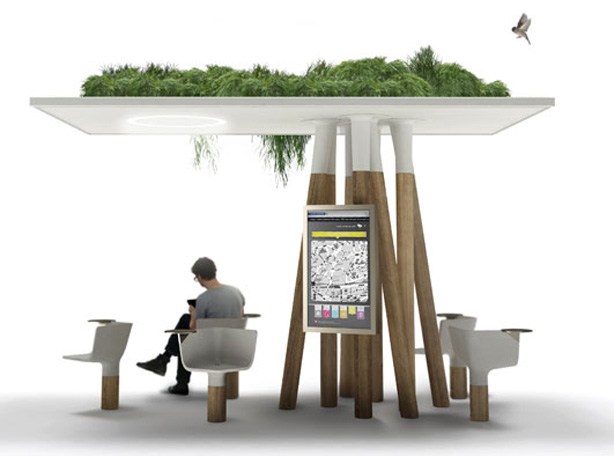 Who isn’t looking for a small peaceful urban haven at which to chill out, check email, figure out what’s next?
Who isn’t looking for a small peaceful urban haven at which to chill out, check email, figure out what’s next?
For an urban development project commissioned by the city of Paris, JCDecaux, inventor of the “street furniture” concept of outdoor advertising, collaborated with designer Mathieu Lehanneur to create Escale Numérique, a green roofed wifi connected corner of respite on the busy Rond Point des Champs-Elysées. Lehanneur is no stranger to eco-friendly designs-he’s the designer of the acclaimed living air filter.
“Like the Wallace fountains, which since the end of the 19 th century have offered Parisian the free drinking water circulating beneath their feet,” expained Lehanneur, “Escale Numérique allows everyone to benefit from a high-speed wifi connection by raising it from beneath the ground.” Paris offers free wifi in almost all its public parks.
Lehanneur’s protected shelter with a green roof is like “a garden placed on a few tree trunks,” designed to be as attractive when viewed from the ground as from a balcony. The hard-wearing concrete swivel seats, equipped with electrical outlets, have mini tables attached where one can rest an elbow, book, or laptop.
A large touch screen, above, provides updated information about city services: guides, news and augmented reality for tourists and visitors who are not online. The designer considers Escale Numérique “a forerunner for a new range of urban architecture where virtual reality dictates the shape of what is real in order to live with even greater fluidity.”
Photos: Felipe Ribon
15 Primitive Houses You Can Build Yourself
Imagine having a home that is truly yours, with no monthly rent or a mortgage payment. If you’re willing to live like our ancestors did, it can be done!
Whether you need to improves a shelter after a disaster, or just want to run away to the wilderness, these primitive houses may be the answer you need.
Here you’ll see how people from around the globe have built their own homes throughout history.

Tipis are cone-shaped shelters used by the Plains tribes of North America. They are made from wooden frames covered in buffalo hide. Early versions of these structures measured as much as 12 feet high.
Lavvu

The Lavvuu is wider than a tipi and can withstand high winds. Used as a temporary dwelling by the Sami people of Scandinavia, the lavuu was originally crafted with wooden poles covered in reindeer hide.
Wigwam

Wigwams are associated with the Algonquian Indian tribe. They consist of arched wooden framing poles, which are then covered with anything from bark and brush to animal hide. Wigwams may be triangular or dome-like in appearance.
Hogan

The Navajo people first construct the hogans, which come in many shapes and sizes. They can be erected without interior posts and may feature walls made of wood or stone. The roofs consist of either packed earth or bark.
Burdei

A burdei sits partially underground and has a history that reaches back 6,000 years. They could originally be found in the Carpathian Mountains in Eastern Europe. During the late 19th century, the burdei was also used North America.
Barabara

Barabara were the homes of the Alutiiq and Aleuts of the Aleutian Islands. The base of the barabara is positioned underground, creating a barrier from the powerful winds that routinely sweep over this region.
Clochán

The clochán is a hut-like structure made from overlapping pieces of stone. It is constructed without mortar and remains in tact due to compressional forces, a method called dry-stone. These dwellings were common in southwestern Ireland.
Log cabin

Log cabins are made from logs with notches cut into both ends, allowing for a tight fit once the logs are laid on top of one another. A family could construct a log cabin in a matter of days, and the finished structure could remain standing for years.
Longhouse

Longhouses are usually associated with the Iroquois tribes of North America. The longhouse is constructed with pole frames covered in bark, and measure up to 200 feet long. Smaller longhouses could shelter one or more families, while larger longhouses could accommodate 60 people.
Bamboo house

Because the strong, lightweight and fast-growing bamboo is readily available in some regions of the world, including Asia and parts of Central and South America, it is a considered an excellent (and sustainable) source of construction material.
Pueblo

Pueblos share their name with the Native American tribe that first built them. Pueblos are multi-family homes built with bricks made from a mixture of straw and clay called adobe. Pueblos could shelter a whole clan, with each family residing in its own space.
Earthen house

It’s the surrounding earth that creates the walls on three or four sides of this structure, which is covered by a roof. These kinds of shelters provide excellent protection from wind and cold.
Igloo

Igloos are made of snow and are commonly associated with the Eskimos in Northern Canada. They are crafted from large blocks of ice that are secured with snow to create the dome roof. An occupied igloo, warmed only by body heat, can reach temperatures as high as 60 degrees, even when it’s below freezing outside.
Yurt

Portable and easy to erect, the yurt stayed popular with nomadic people residing in Central Asia for about 3,000 years. Yurts feature expandable circle-shaped frames that are covered in felt. A yurt can be set up in about two hours.
Walipini

The walipini can be constructed for about $300, and use the surrounding earth as its walls. A greenhouse sits approximately six feet below ground level, allowing for year-round gardening, and the walls hold heat generated from daytime solar radiation.
Leafy Green Machine is a complete urban farm system in a shipping container
These shipping container growing units from Freight Farms feature high-density vegetable & herb production, and include everything needed to go from seed to table, year-round, in a fraction of the space as a conventional greenhouse.Ideas for methods of growing more produce in and around urban areas, close to where the food will be consumed, come in all sorts of shapes and sizes, but one shape in particular keeps popping up in urban agriculture, especially when it comes to year-round growing and cold climates. Shipping containers (also known as intermodal freight containers), while probably not the first thing to come to mind when it comes to growing vegetables, are a great choice for upcycling and repurposing for urban farms, because they’re affordable, readily available, and built to last for decades, and with some extensive retrofitting, can be used as climate-controlled indoor farms.
I recently covered the CropBox, which boasts of being a ” farm in a box,” but long before that shipping container farm made the news, Freight Farms was building their own high-density growing units inside cargo containers, thanks to a successful crowdfunding campaign run in 2011. Since then, Freight Farms has continued to develop and improve its urban farm units, dubbed the Leafy Green Machine (LGM), which uses high-efficiency LED lighting, vertical hydroponic growing towers, and an automated climate-control and irrigation system to grow thousands of plants inside a single 320 square foot container.
The Freight Farms design is based on a conventional insulated shipping container measuring 40′ x 8′ (~12.2m x 2.4m), but are extensively retrofitted to serve as a micro-farm that can grow some 4,500 plants at a time. The rows of plants are grown vertically, with the LED lighting strips between them delivering “the optimal wavelengths for uniform plant growth” and the hydroponic system supplying the nutrients that the plants need, directly to their roots, using 90% less water than conventional growing does.
And not only do the units grow mature crops, but the LGM also integrates a dedicated germination and seedling station (also using LED lighting and hydroponic irrigation) that can handle up to 2500 plant starts, which then get planted into the growing towers a few weeks after sprouting. This aspect of the LGM is probably one of the most essential elements for a production farm, and one that isn’t so obvious to non-farmers, as it enables the growers to start seeds and continuously feed those seedlings into the system for regular harvests, all within the walls of the shipping container.
According to the Freight Farms website, these “smart farms” (so-called because they can be controlled via smartphone) also offer another advantage over outdoor growing and other open systems, because the use of a sealed container for growing can “eliminate the need for herbicides/pesticides.” The LGM system is also considered to be modular and scalable, as the shipping containers can be securely stacked on top of each other for increased production in the same physical footprint as a single unit.
By enabling year-round growing, even in cold climates, each of these 320 square foot containers are said to be able to produce an acre’s worth of food each year, and could be a viable option for the urban farm entrepreneur. The cost of a unit isn’t cheap ($76,000), and there are other costs associated with operating one (estimated to be about $13,000 per year for electricity, water, and various growing and packaging supplies), but considering that the LGMs are considered to be capable of producing yields of locally-grown produce “at commercial-scale in any climate and any season,” they might be a great business investment for the prospective urban farmer.
Find out more at Freight Farms.
VIPP Introduces a Problematic Prefab
Oscar Wilde wrote in The Picture of Dorian Gray: “Nowadays people know the price of everything and the value of nothing.” I use that phrase a lot when people complain about the price of everything from furniture to tiny houses; short production runs and quality materials mean higher costs. But even I choke occasionally, such as with this visually stunning new prefab from VIPP, a Danish company that has been working with steel since 1939, starting with an iconic wastebasket that’s now in the Museum of Modern Art.
The VIPP shelter is a beautiful object, all glass and steel, 50,000 pounds of superior workmanship and design. 592 square feet of felt-lined modern living. It gives new definition to the word “turnkey”- there are no options whatsoever. It’s “a plug and play getaway.”
Indeed, they have chosen everything from the bedsheets to the toilet brush, it is all included. The specifications are top of the line, from the VIPP kitchen to the electric radiant concrete floors to the 10 inches of insulation. It is indeed a stunning minimalist modern object of desire.
And then it all begins to fall apart, perhaps in this interview with designer Morten Bo Jensen, who says:
The biggest difference between this getaway compared to anything else on the market is the fact that I am not an architect. The shelter is conceived more like a product than a piece of architecture that melds seamlessly with its surrounding. We didn’t start with a piece of land on which we customized a house taking into consideration the natural surroundings. There is plenty of amazing architecture out there, but we wanted to conceive something different; an escape in the form of an object designed down to last detail, where the only choice left to the customer, is where to put it.
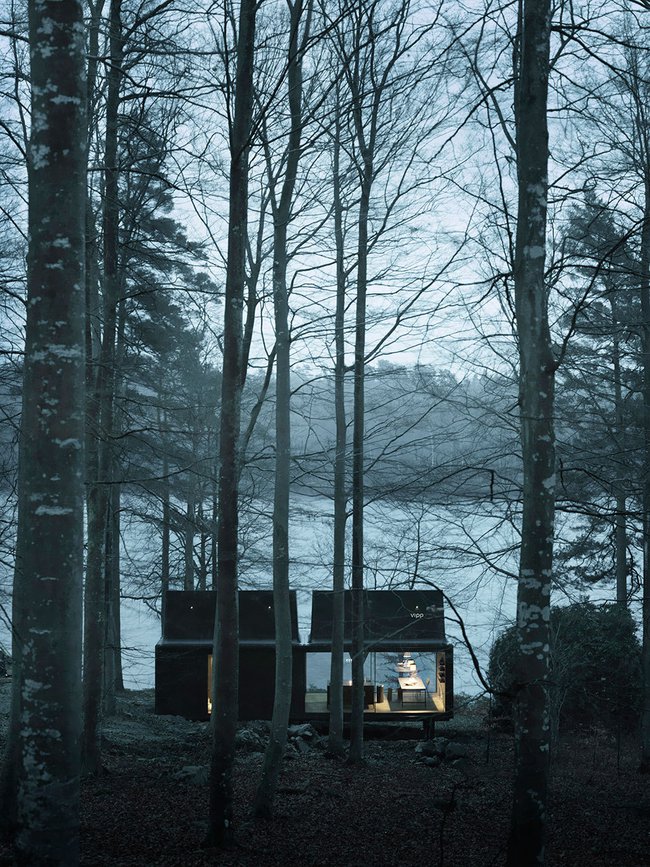
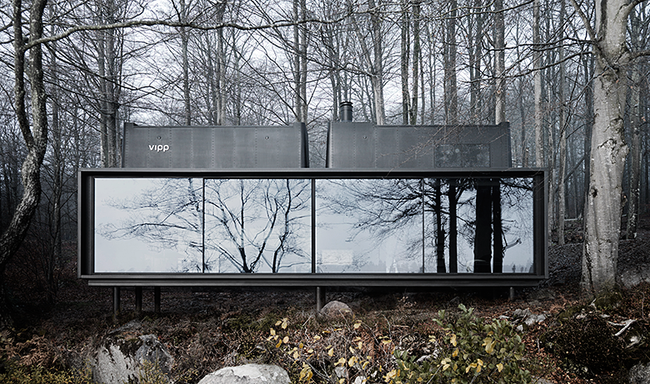
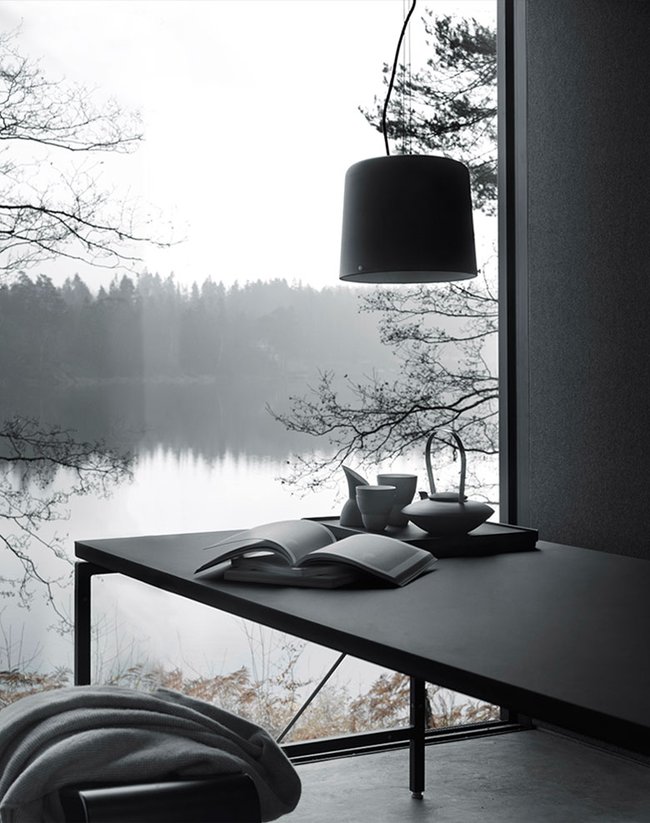
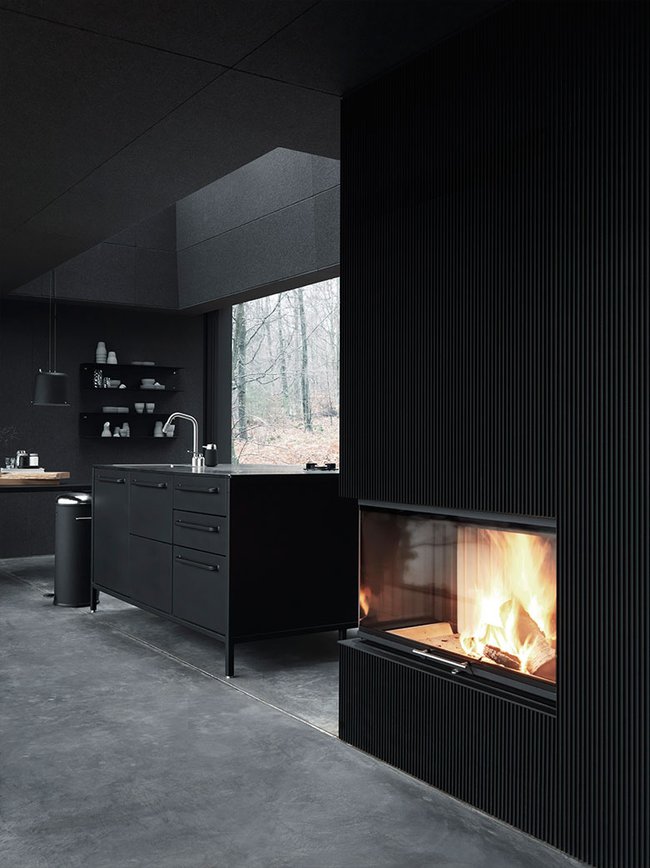
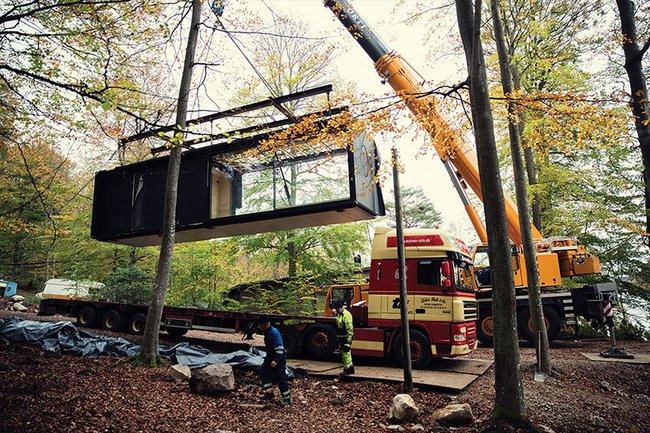

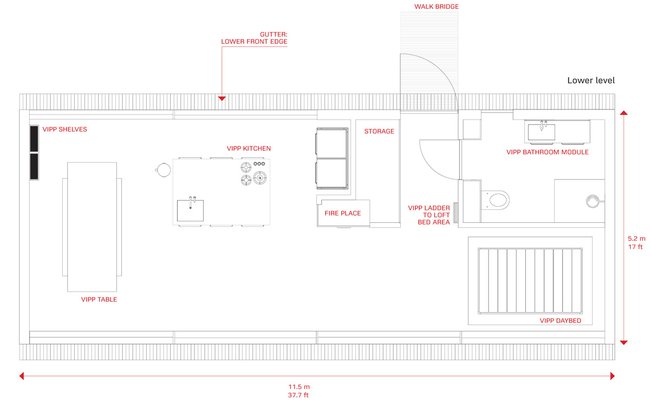
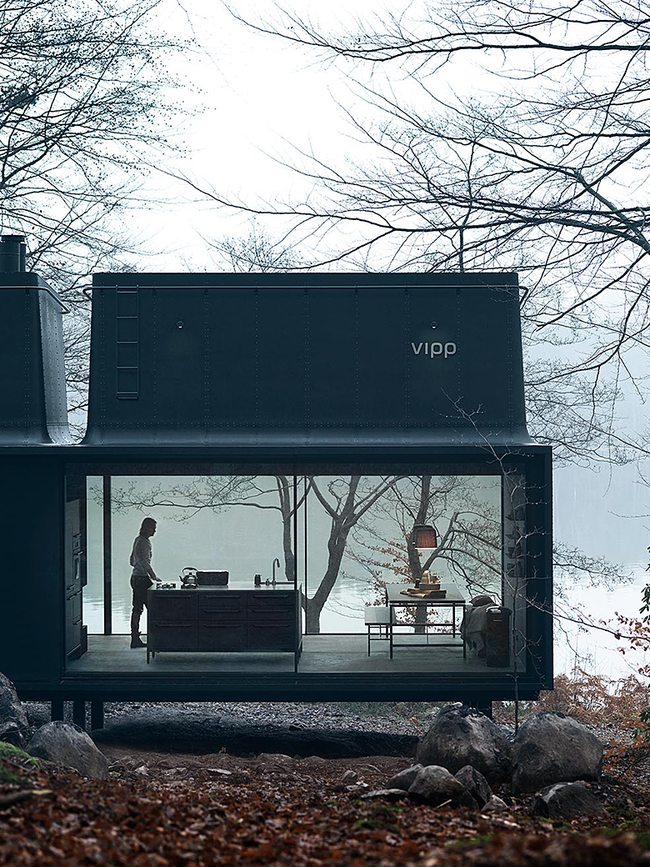
But architecture doesn’t work like that. You cannot design a building with a wall of glass and claim that it will work “in the darkest forest or the brightest desert”; put this object in full sun, with no shading and that wall of glass and black steel and it will be uninhabitable.
The loft will be an oven, even with the one opening window. But nobody will use it anyway; just try spending one night where you have to climb a steep ladder and then crawl up from the bottom of the bed. You will sleep downstairs on the second night.
Then there is the small matter of cost, which I usually downplay, but $US 585,000 is a lot of money for 592 square feet, for 50,000 pounds of glass and steel. That is actually the same price per pound as a BMW Series 2 Coupe; you can do your own price per square foot calculation. That also does not include land, delivery, crane rental, or site services like septic or electricity. And add 12% for US east coast delivery.
On another design website they title their post The Vipp Shelter is a plug-and-play prefab home that can be placed just about anywhere. If only it were. However you cannot call something “plug and play” if there are no plugs. So you may not have to buy a toilet brush but you have to buy infrastructure, which is surprisingly expensive and difficult.
Perhaps I am just bitter, because I spent two years trying to sell a high end minihome and ran into all these problems of connections and zoning bylaws and lofts and costs. I just look at this and see every problem that I had writ large. There are a dozen reasons that this kind of building cannot be placed just about anywhere; perhaps it will work in a nice Scandinavian climate with lots of shade and hopefully no mosquitoes.
I shouldn’t be so critical, it is a beautiful thing and I hope they sell like VIPP wastebaskets, also overpriced iconic objects of desire. But at least a wastebasket really can go anywhere and doesn’t have to be plugged in. Lots more beautiful documentation and photographs at VIPP.
8 Scientifically Proven Reasons To Spend Way More Time Outside
Novelist Jane Austen said, “To sit in the shade on a fine day and look upon verdure is the most perfect refreshment.” And who could argue with her? I know I can’t. Appreciating the magnificence of trees, inhaling salty ocean air, or marveling at the sumptuous colors of a field of flowers always fills me with a sense of wonder and renews my spirit.
There’s good reason so many artists and poets have found inspiration in the beauty of creation. Research has shown that spending time in nature can benefit you both mentally and physically, in a variety of surprising ways.
If you feel like taking a walk outside in the middle of the day is necessary for your well-being, you’re probably right. Read on for eight compelling reasons to spend more time enjoying the great outdoors!
1. Spending time in nature increases your sense of vitality.
A series of studies examined the effects of nature on participants’ self-reported levels of vitality. The results showed that spending time in nature (and even looking at pictures of it or visualizing nature scenes) increased participants’ energy. It’s no surprise: when you’re outside, you awaken your senses. Surrounded by the colors, smells and sounds of all the living beings in nature, you literally feel life all around you. And as a result, you feel more alive.
2. Exposure to nature makes you more resilient to stress.
In one study, participants were shown a traumatic video (of workplace accidents, in case you’re curious) followed by a video that showed either outdoor scenes of nature or urban environments. Researchers found that the individuals who viewed the nature scenes showed faster physical recovery from the effects of stress than the subjects who viewed urban scenes. Going outdoors may just be the most natural remedy there is for all different kinds of healing.
3. Exercising in nature boosts your mood.
We all know that exercise produces endorphins and boosts your mood. So add nature to the equation and we’ve got a whole new level of natural mood-boosting. A review of several studies showed that exercising outdoors improved participants’ moods and self-esteem after just five minutes. Interestingly, having water in the outdoor environment was found to be particularly beneficial.
4. Spending time in nature helps you focus.
Research has shown that when people spend time in nature, it can help their ability to concentrate. For example, one study found that children with ADHD showed significantly better concentration after taking a 20-minute walk in nature, compared to a walk in an urban setting.
Another study showed that taking a walk in the park (or even just looking at green space) helped to ease brain fatigue and increase participants’ abilities to concentrate. Spending time outside makes us feel connected to a bigger picture of life. We feel tuned into the rhythms of nature, and as a result, less distracted by the little stressors of the every day. Who knew the smell of grass could be an elixir for concentration?!
5. Living near green space can improve your mental health.
One study that followed participants over five years found that moving to an area that has more green space increased participants’ sense of well-being. And this effect lasted for three years! Let’s all wake up and smell the roses!
6. Spending time in nature can boost your immune system.
Researchers have found that spending time in nature increases your sense of awe (e.g. that feeling of wonder you get as a result of being overwhelmed by the beauty of a sunset or the vastness of the ocean). Who doesn’t want to feel awe? There’s no reason your life shouldn’t feel awesome. Not only does awe make you more aware of the present moment and increase your life satisfaction, awe is also linked to lower levels ofcytokines, which are markers of inflammation. In other words, science says that you’ll be healthier and more inclined to own your awesome if you get out into nature more often.
7. Living near green space may even increase your life span.
A five-year study of Japanese senior citizens indicated that living near areas with walkable green spaces was associated with a lower probability of dying during the study. This relationship was found even after controlling for variables like income, age, sex, marital status, and other relevant factors. The time is now to get outside!
8. Can’t get outside? Having indoor plants can positively affect your health.
If time (or the weather) doesn’t permit you to go outdoors, bringing nature inside can also benefit you. For example, a study of hospital patients recovering from surgery found that individuals who were randomly assigned to rooms that had plants showed lower blood pressure and heart rate, lower ratings of pain, anxiety, and fatigue, and took fewer doses of pain medication compared to patients who did not have plants.
The moral of the story? Naturalist John Muir said it best, “Climb the mountains and get their good tidings. Nature’s peace will flow into you as sunshine flows into trees. The winds will blow their own freshness into you, and the storms their energy, while cares will drop away from you like the leaves of Autumn.”
Western Senators Face Off In Fight Over Plan To Give Away America’s Public Lands
CREDIT: Shutterstock
The new chair of the powerful Senate Energy and Natural Resources Committee is expected to secure a vote Thursday by the U.S. Senate on a controversial proposal to sell off America’s national forests and other public lands.
U.S. Senator Lisa Murkowski’s (R-AK) amendment to Congress’s budget resolution would support and fund state efforts – which many argue are unconstitutional – to seize and sell America’s public lands. These include all national forests, wildlife refuges, wilderness areas, historic sites, and national monuments.
Murkowski’s amendment follows a similar proposal from House Natural Resources Committee Chair Rob Bishop (R-UT) to spend $50 million of taxpayer dollars to fund the sale or transfer of U.S. public lands to states.
The land grab proposals in Congress this year appear to echo the calls of outlaw rancher Cliven Bundy, best known for his armed standoff with federal officials last year, who has infamously refused to recognize the authority of the federal government, including over public lands.
Murkowski’s proposal to sell off public lands, however, is meeting stiff opposition from other western senators. On a conference call yesterday, Senators Martin Heinrich (D-NM) and Michael Bennet (D-CO) said that they are determined to turn back legislative attacks on the outdoors. Bennet called efforts to sell off lands to reduce the federal deficit “an assault on our public lands.”
Senator Heinrich also introduced an amendment Wednesday which would block any effort to sell off public lands to reduce the federal deficit. Heinrich said that “selling off America’s treasured lands to the highest bidder would result in a proliferation of locked gates and no-trespassing signs in places that have been open to the public and used for generations.”
Public opinion research has found that a majority of Westerners oppose land grab efforts and believe that transferring public lands to state control will result in reduced access for recreation; higher taxes; increased drilling, mining and logging; and a high risk that treasured public lands will be auctioned off to the highest bidder.
Over the past few months, sportsmen’s groups have also been battling state efforts to seize and sell off public lands by rallying in state capitols across the West. Land Tawney, Executive Director of Backcountry Hunters and Anglers, thanked Senator Heinrich for introducing his amendment and fighting for public lands.
“American hunters and anglers have consistently stood up in support of U.S. public lands since Theodore Roosevelt set them aside for all Americans more than a century ago,” Tawney said. “Today, Congress has responded.”
The dueling Senate amendments are expected to be voted on during the Senate’s “vote-o-rama” budget amendment series later on Thursday.
10 Flowers To Grow With Vegetables
Posted By Andrew McIndoe @ 9:15 on March 23rd 2015
Companion Planting: How To Deter Pests and Encourage Beneficial Insects
Flowers among the vegetables are more than just a colourful addition. They attract pollinating insects to fertilise the flowers of beans, peas, tomatoes and all those crops that depend on pollination to produce a crop.
In some cases they may act as a decoy or a repellent to harmful insects such as aphids. Some are beneficial to and attract predatory insects such as ladybirds (ladybugs), wasps and hoverflies. These are particularly useful in controlling pests naturally without your intervention.
Some also act as soil improvers: either by fixing nutrients in the soil or acting as green manures if dug into the ground at an early age. Some just look pretty, attract the bees and provide some lovely blooms for cutting for the house.
1. The hardy pot marigold, calendula looks at home in the vegetable garden or alongside vegetables in raised beds or containers. The petals can be used as a lively addition to salads.
Bees and other pollinators will visit for the nectar and pollen. Grow single flowered varieties and allow it to seed itself. It is a hardy annual so will pop up year after year on most soils.
2. Nasturtium always looks at home amongst vegetables, especially later in the year. Both flowers and leaves are edible, as are the seeds which are sometimes used pickled as an alternative to capers. Visited by bees it is also a magnet for caterpillars, so a good indicator plant.
3. Poached egg flower, Limnanthes douglasii is the ultimate flower to grow anywhere around crops that need pollinating.
It forms a low cushion of feathery foliage smothered in shining flowers. Bees swarm to it, as do hoverflies which will prey on those pests.
4. Practically all simple daisies are highly attractive to bees, butterflies, hoverflies and predatory wasps.
Camomile fits in anywhere in the open ground, raised beds or containers. You can use the flowers to make a fragrant, sleep-inducing infusion.
5. I’ve mentioned the prairie flower giant hyssop, agastache many times for its spikes of blue flowers in late summer. It is not often recommended as a flower for the vegetable garden, but it is a magnet for bees and looks lovely with orange and yellow marigolds.
6. French and African marigolds are used to deter aphids, they contain some natural pyrethrins. They are also pungently aromatic and are supposed to repel nematodes in the soil.
They attract hoverflies which prey on the aphids and the single and semi-double varieties seem to be popular with bees.
7. Phacelia, sometimes called scorpionweed, can be grown as a green manure; in other words you dig the green plant into the soil as a fertiliser.
If left to flower it is highly attractive to pollinators and its soft lilac flowers are highly attractive too.
8. Clover is a legume, in other words it is in the same family as peas and beans. This means it has nodules on its roots which contain nitrogen-fixing bacteria.
These fix atmospheric nitrogen providing food for the plant. Used as a green manure, or if the roots are left in the ground it feeds the soil. Clover is widely used in organic farming.
Red clover looks lovely and its prevalence as the nectar source for honey is testament to its attraction to pollinators.
9. Cosmos is an easy hardy annual to grow with feathery foliage and beautiful single or semi-double blooms that are superb for cutting.
Bees, other pollinators and butterflies love it and it is particularly useful later in the season to attract pollinators to your runner beans and tomatoes.
10. In the shadiest corner of the vegetable plot grow comfrey. You may need to contain it but it does make great ground cover.
If you have fruit trees, grow it under them. The flowers are a good nectar source and the leaves a great addition to the compost heap. Organic gardeners will brew comfrey tea: as a fertiliser for the plants.
Check Out This Highway Billboard That Grows Organic Lettuce and Generates Drinking Water
We’ve seen vertical farms before, but this brings urban agriculture quite literally to the next level. In the Bujama region of Lima, Peru, thousands of lettuce heads are sprouting next to a major highway thanks to a very unusual source: a billboard.
FCB Mayo Peru and University of Engineering & Technology (UTEC)-the minds behind an innovative billboard that’s sucking up Lima’s notorious pollution and another billboard that’s turning the city’s humid air into drinking water -have come up with the “Air Orchard” billboard that can generate pollution-free produce.
We all know that this isn’t just any old advertisement by the side of the road. So how does it work? The concept is actually very simple to anyone familiar with the soil-free farming method of hydroponics. Sitting behind the billboard’s panel are 10 large dehumidifiers that draw in water from the air and turn it into potable water. This water then drips down a series of PVC tubes that are coated in nutrients. The tubes are also white to reflect the sun’s rays and boost photosynthesis. Air Orchard’s system is simply an adaptation of the “nutrient film technique” of hydroponics, in which plants’ roots can constantly access a recirculating stream of fertilizer-rich water.
The billboard is located on Peru’s largest and most important highway, the Panamericana Sur, and is already in operation. According to a press release, more than 2,800 heads of lettuce are given away weekly to passersby and the local community from the Air Orchard-all for free.
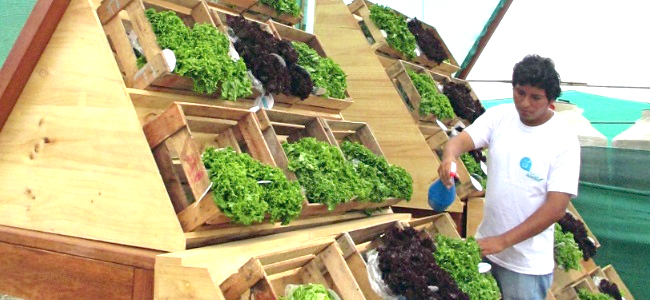
“Currently, organic products are gaining significance, compared to chemically treated products. UTEC wanted to work out the most efficient way to grow a crop of 2,000 heads of lettuce using the clean water generated by the panel,” said Jessica Ruas, UTEC marketing director in a statement. “In addition to growing lettuce, the billboard still produces 96 liters of drinking water a day to provide for the surrounding community.”
This technique solves a pressing problem in the area. As the video below pointed out, water that’s used for irrigating Bujama’s fields are highly contaminated with arsenic, lead or cadmium that can seep into nearby farmland and crops. Consequently, this means the majority of the vegetables consumed in Lima are contaminated.
“UTEC is a university that was founded with the mission of developing applied research that provides practical solutions to the challenges of society and industry,” said Ignacio Montero, director of business innovation at UTEC in a statement. “These principles are proven through innovative initiatives like the ‘Air Orchard.’ We improved on our first panel that generated water from moisture in the air for human consumption and increased the production of water to grow healthy food. We have found a practical solution to a real problem, and through creativity and innovation we developed solutions to the challenges of our country and the world.”
Now imagine eating fresh vegetables from a billboard on a highway near you.
Outrage boils over as B.C. government plans to sell groundwater for $2.25 per million litres
More than 82,000 people have signed a petition against the government’s plans to sell B.C.’s water for $2.25 per million litres.
“It is outrageous,” says the online petition from SumOfUs.org, that corporations can buy water “for next to nothing.”
B.C.’s Water Sustainability Act (WSA), which comes into effect next January and replaces the province’s century-old water legislation, has been heralded as a major step forward. But politicians and experts are raising doubts over whether the newly announced water fees may be too low to cover the cost of the program, asking if the act simply won’t be implemented properly, or if taxpayers could end up picking up the bill.
Last month, the government unveiled the new water pricing structure, which will include, for the first time in B.C.’s history, groundwater being regulated and subject to fees and rentals.
Critics said that, while it’s a step in the right direction, the prices are still not close to capturing the resource’s value.
Under the new regime, most residential water users won’t see a big difference. Households with wells are exempt from fees, and homes supplied by municipal water systems may pay $1 or $2 more per year, according to the ministry.
But water rates for industrial users, which are a fraction of what some provinces charge, are “like a giveaway” to corporations, critics say.
NDP environment critic Spencer Chandra Herbert said the new legislation is “promising,” but questioned whether it would actually live up to its promise, or just remain “nice words on paper.”
“I don’t think the water’s being properly valued in order to properly protect it,” he said, adding effective water management involves “boots on the ground” to enforce the act, and “policy people” to make decisions.
“A lot of business groups, community groups, farmers – they want to see better protection for their water. I’m just worried we’re not going to get it.”
When Chandra Herbert raised the issue last month in the legislature, Environment Minister Mary Polak replied that British Columbians are “quite proud” that B.C. “has never engaged in the selling of water as a commodity.”
Polak said: “We don’t sell water. We charge administration fees for the management of that resource.”

A Ministry of Environment spokesman said the new fees and rentals have been set to cover the cost of administering the new WSA, estimated at $8 million per year.
In the legislature, Polak pointed to the example of Nestlé, Canada’s largest bottled-water producer, which operates a plant in Hope and, she said, will be “charged at the highest industrial rate.”
Under the old Water Act, Nestlé, like other groundwater users, didn’t need to pay the government anything for water withdrawals. But under the WSA, Nestlé will start paying for the hundreds of millions of litres of groundwater they withdraw, bottle and sell. That rate of $2.25 per million litres – the highest industrial rate in the new price structure – means Nestlé will pay the government $596.25 a year for 265 million litres.
Under the WSA, Nestlé and other groundwater users also will begin paying permit fees. A Nestlé executive said he expects the annual fee for water-bottling companies to be between $1,000 and $10,000.
The government’s review of water pricing is a “once-in-a-generation opportunity,” said Oliver Brandes from the University of Victoria’s POLIS Project. But there’s still “significant uncertainty,” he said, about whether the new system will provide sufficient resources to implement the act.
The WSA, he said, “has the potential to be revolutionary, but only if it’s fully – key word, fully – implemented, which requires dollars.”
Someone needs to pay that bill, Brandes said, whether it’s B.C. taxpayers or water users. And linking that cost recovery to the large-scale industrial users, he said, may be not only more ecologically and financially sustainable, but more fair as well.
If the new fees fail to cover the cost of the program, that could effectively mean industries enjoy cheap water subsidized by taxpayers, said David Zetland, a professor of economics and a water pricing expert.
“And if the taxpayer’s subsidizing it, that’s a scandal,” said Zetland, who previously taught at SFU.
The government expects that won’t happen, but Zetland suspects, with the current rates, “taxpayers are going to be on the hook.”
John Challinor, Nestlé Waters Canada‘s director of corporate affairs, said: “All monies collected should be used solely to support the management and enforcement of the regulation. This program should not be subsidized by taxpayers who don’t draw groundwater.”
The program should be “self-funded,” Challinor said, with pricing “based on a full cost recovery model” to cover mapping of watersheds, audits, management and enforcement.
“We have always agreed to pay our fair share for groundwater. But, we also believe that all commercial, municipal and domestic groundwater users should pay their fair share.”
Learn How This Family Grows 6,000 Lbs Of Food on Just 1/10th Acre
Ever thought of growing your own food but didn’t think it was possible? It’s more that possible! It might even be the way of the future. If the Dervaes family can do it while living in Los Angeles, I think you can to.
The Dervaes family live on 1/10th of an acre 15 minutes from downtown L.A.. In itself that’s not strange. What’s crazy is that they manage to maintain a sustainable and independent urban farm. Complete with animals!
In a year they produce around 4,300 pounds of veggies, 900 chicken , 1000 duck eggs, 25 lbs honey, and pounds of seasonal fruit. There are over 400 species of plants. What?! They have everything they need to ‘live off the land.’ From beets to bees. Chickens to chickpeas.
What the family doesn’t eat they sell from their porch, making around $20,000 a year. Local organic food is so popular that they don’t have any problems finding customs. Even chefs from restaurants seek them out.
I tried to figure out how big 1/10th (0.1) of an acre is in perspective to other things . I used this website, findlotsize.com, and put markers around my ‘house.’ I got a rough estimate that mine is 0.062, but my math seems wrong since my place looks way smaller. It’s interesting to know all the same. Check it out … if you’re curious to learn what size yours is.
Here’s the video… Enjoy!
Global Warming Is Slowing Ocean Currents Causing Dire Consequences, Warns Climate Expert Michael Mann ” EcoWatch
Climate scientists Michael Mann and Stefan Rahmstorf announced the findings of their new study yesterday, which shows that the rapid melting of the polar ice has slowed down currents in the Atlantic Ocean, particularly since 1970. The scientists say “the slowdown in ocean currents will result in sea level rise in cities like New York and Boston, and temperature changes on both sides of the Atlantic,” reports NPR’s Jeremy Hobson. Mann, who is a professor and the director of the Earth System Science Center at Penn State University, joined Hobson yesterday on Here and Now to discuss the study and the implications of its findings.
Mann explains the consequences of the Gulf Stream shutting down and how it would drastically alter the climate in Europe and North America. The last time this happened, about 12,000 years ago, at the end of the last ice age, North America and Europe went back into a mini-ice age, Mann says. Not only would North America and Europe experience colder temperatures, but “If those current systems shut down, then suddenly the North Atlantic [fisheries] would no longer be productive,” says Mann.
Mann says a shutdown of the Gulf Stream might happen a lot sooner than the latest Intergovernmental Panel on Climate Change (IPCC) report predicts. “Our studies suggest we are much closer to that than the current model suggests. A full shutdown … could be decades from now.”
Listen to the full interview here:
‘Solar Shirt’ Powers Your iPhone in Style, Unveiled at SXSW
Solar has gone chic with high end fashion designer, Pauline van Dongen’s Solar Shirt from her Wearable Solar collection. The shirt, which was designed in collaboration with TNO and Holst Centre, was unveiled at a SXSW Interactive. The shirt allows you to power up your portable devices using solar cells integrated into the fabric, all while looking good doing it.
“Wearing solar cells lets us harness the sun’s potential energy and become a power source ourselves,” said van Dongen in a press release. “As a designer, I’m excited by how solar cells can add to the esthetic of a garment … We’ve taken solar fashion from the catwalk to [main] street, with an attractive yet practical garment that people could wear every day,” she says.
To charge your phone or other portable device, you need to plug your charger into a small “module” in the front of the shirt, which doubles as a pocket when you’re not using it to charge a device. The shirt can charge smartphones, MP3 players, GPS systems and other USB-compatible handheld or portable devices. It contains 120 thin-film solar cells, so “in bright sunlight, it produces one watt of electricity, enough to charge a phone in a few hours,” said Holst Centre’s Margreet de Kok in the press release. Indoors, it generates enough power to keep a battery alive.
Many clothing designers have struggled to create wearable technology with the moving body in mind and most of the clothing is not machine washable. The Solar Shirt has all of that covered. “Our technology enables extremely thin electronics that are stretchable, flexible and washable,” de Kok said. “It can be integrated into fabrics using standard high-volume techniques that are well known in the textile industry. The maturity of the technology means textile manufactures could bring functional fabrics to market in a matter of months using existing production facilities.”
Fossil Fuel Industry Is Quietly Building Pipeline Network That ‘Dwarfs Keystone’ XL
Despite public opposition that has so far blocked the building of the Keystone XL pipeline, the fossil fuels industry has successfully-and quietly-expanded the nation’s domestic oil network by installing thousands of miles of pipeline across the country, according to new reporting by the Associated Press.
“Overall, the network has increased by almost a quarter in the last decade,” the AP reports. “And the work dwarfs Keystone. About 3.3 million barrels per day of capacity have been added since 2012 alone-five times more oil than the Canada-to-Texas Keystone line could carry if it’s ever built.”
While the Keystone project is still in limbo, the petroleum industry has “pushed relentlessly everywhere else to get oil to market more efficiently, and its adversaries have been unable to stop other major pipelines,” writes AP journalist Henry Jackson.
That’s not to say they haven’t tried.
In Minnesota, for example, local opponents succeeded last year in getting state regulators to consider rerouting a 616-mile pipeline proposed by Toronto-based Enbridge around lakes and forests, delaying it for at least a year.
“More typical, though, was an Enbridge project to double the capacity of a 285-mile stretch of pipeline in Michigan,” Jackson writes. “Groups like the Michigan Coalition Against Tar Sands fought the proposal, citing a spill in 2010 that caused serious environmental damage. But the Michigan Public Service Commission ruled the project acceptable, and the expansion went ahead.”
Opposition to local pipeline projects is ongoing. In Iowa, the Meskwaki Indian tribe is objecting to a Texas company’s plans to construct a 343-mile crude oil pipeline across 18 Iowa counties, the Des Moines Register reported Monday.
“As a people that have lived in North America for thousands of years, we have environmental concerns about the land and drinking water,” tribal chairwoman Judith Bender wrote in a letter filed last month with state officials. “As long as our environment was good we could live, regardless of who our neighbors were.”
She continued: “Our main concern is Iowa’s aquifers might be significantly damaged. And it will only take one mistake and life in Iowa will change for the next thousands of years. We think that should be protected, because it is the water that gives Iowa the best way of life.”
An analysis released in November by the Center for Biological Diversity found that there have been more than 8,700 significant incidents with U.S. pipelines involving death, injury, and economic and environmental damage since 1986-more than 300 per year.
In fact, a new proposal from the Department of Transportation’s Pipeline and Hazardous Materials Safety Administration “is an implicit acknowledgment that some of the oil industry’s testing technology isn’t sophisticated enough to detect cracks or corrosion in time to prevent a pipeline’s failure,” according to Energy & Environment Publishing’s EnergyWire, which reported exclusively on the plan on Monday.
According to EnergyWire:
Almost two years after an Exxon Mobil Corp. pipeline split open and sent Canadian crude flowing through a neighborhood in Mayflower, Ark., federal regulators have quietly proposed a sweeping rewrite of oil pipeline safety rules.
If the proposal is finalized in its current form, as much as 95 percent of the U.S. pipelines that carry crude, gasoline and other liquids-182,000 miles-would be subject to the new rules and about half the system may have to undergo extensive tests to prove it can operate safely, according to information from the Department of Transportation’s Pipeline and Hazardous Materials Safety Administration.
The plan, known as the Hazardous Liquids Integrity Verification Process, is an implicit acknowledgment that some of the oil industry’s testing technology isn’t sophisticated enough to detect cracks or corrosion in time to prevent a pipeline’s failure. And for the first time since PHMSA was created, it may wind up telling companies they have to replace certain aging pipelines.
The oil and pipeline industries are already lobbying against the idea, EnergyWire reports, though few details about the plan are publicly available.
According to EnergyWire journalist Mike Lee: “PHMSA declined to make any of its officials available for interviews over a five-day period and wouldn’t answer written questions on the record-even though the agency has already briefed two oil industry trade associations about the proposal.”


